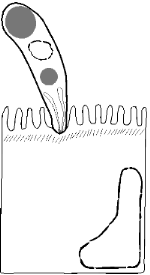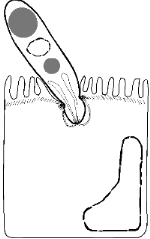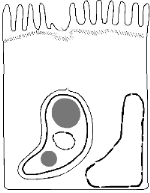
(other motile stages are merozoites - with apical complex - and microgametes - with 'perforatorium (Scholtyseck)' ). We find content of micronems (see sporozoite) in the intercellular space.
The 'apical complex' is responsible for invasion of the host cell.


One refractile body will disappear and the sporozoite transforms into a trophozoite in which multiplication of nuclei will start.
Finaly merozoites of the first generation will develop by budding from a big multinucleate residual body.